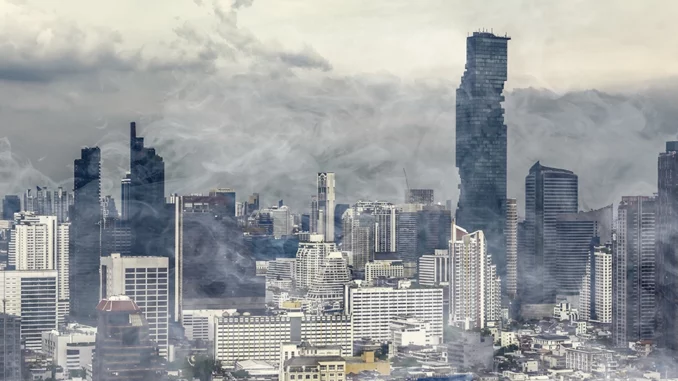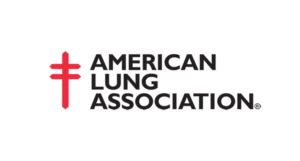
‘State of the Air’ report finds that major differences exist between air pollution exposures for white people and people of color
CHICAGO – (April 21, 2023) – The American Lung Association’s new “State of the Air” report finds that nearly 120 million people in the U.S., or more than one in three, live in counties that had unhealthy levels of ozone or particle pollution. Overall, air quality has improved across the nation; however, major differences exist between air quality in eastern and western states and between air pollution exposures for white people and people of color.
The Lung Association’s 24th annual “State of the Air” report grades Americans’ exposure to unhealthy levels of ground-level ozone air pollution, annual particle pollution, and short-term spikes in particle pollution over a three-year period. This year’s report covers 2019-2021. The report found that out of the nearly 120 million people who live in areas with unhealthy air quality, a disproportionate number – more than 64 million (54%) – are people of color. In fact, people of color were 64% more likely than white people to live in a county with a failing grade for at least one measure, and 3.7 times as likely to live in a county with a failing grade for all three measures.
This is an increase compared to last year’s report where people of color were 61% more likely to live in a county with a failing grade for at least one measure, and 3.6 times as likely to live in a county with a failing grade for all three measures. Differences in air quality were also seen between eastern and western states.
More than 18 million residents in Western states live in counties with three failing grades and the worst 25 counties for short-term particle pollution were all located in the Western U.S. “The good news is that ozone pollution has generally improved across the nation, thanks in large part to the success of the Clean Air Act. In this year’s ‘State of the Air’ report, we found that 19.3 million fewer people are living in areas with unhealthy levels of ozone pollution, also known as smog,” said Harold Wimmer, National President and CEO of the American Lung Association.
“However, the fact is that 120 million people still live in places with unhealthy air pollution, and not all communities are seeing improvements. This is why it is crucial to continue our efforts to ensure that every person in the U.S. has clean air to breathe.”
Particle Pollution Fine particulate matter air pollution or soot, can be deadly. These unhealthy particles in the air come from wildfires, wood-burning stoves, coal-fired power plants, diesel engines and other sources.
Technically known as PM2.5, these microscopic particles can trigger asthma attacks, heart attacks and strokes and cause lung cancer. (more) CONTACT for ALA: Flo McAfee| E: flo@summerlandstudio.com C: 202.486.3673 Press Release In total, 63.7 million people lived in counties that experienced unhealthy spikes in particle pollution, the most reported in the last 10 years. In positive news, the report revealed that 1.5 million fewer people were living in a county that received a failing grade for annual particle pollution.
A total of 18.8 million people lived in a county with a failing grade for this measure. Ozone Pollution Ground-level ozone pollution (also known as smog) is a powerful respiratory irritant whose effects have been likened to a sunburn of the lung. Inhaling ozone can cause shortness of breath, trigger coughing and asthma attacks and may shorten life. Warmer temperatures driven by climate change make ozone more likely to form and harder to clean up. Although there were exceptions, ozone pollution has generally improved across the nation. 103 million people lived in an area with unhealthy ozone pollution, which is 19.3 million fewer than last year’s report. “As a result of numerous current and legacy racist policies and practices, Black Americans are more likely to face environmental risks and live in areas with unhealthy air quality than majority-white communities.
In fact, a report by the NAACP found that 78% of Black Americans live within 30 miles of a coal-fired power plant and 71% live in counties violating federal air-quality standards,” said Cedric “Jamie” Rutland, MD, national volunteer medical spokesperson for the American Lung Association. “On top of that, people of color are more likely to be living with one or more chronic conditions that make us more vulnerable to the health impact of air pollution, including asthma, diabetes and heart disease, and Black Americans are over three times more likely to die of particulate matter exposure than Whites. These disparities are sobering, but important to highlight as we urge local, state and federal governments to invest more in environmental justice.”
The “State of the Air” report relies on data from air quality monitors managed by state, local and tribal air pollution control authorities in counties across the U.S. Unfortunately, out of 3,221 counties in the U.S., only 922 counties are able to monitor for at least one pollutant. That means that there are more than 71 million people who live in counties where their ozone and particle pollution levels are not being monitored.
The American Lung Association is calling on President Biden to urgently move forward on several measures to clean up air pollution nationwide, including new limits on ozone and particle pollution and new measures to clean up power plants and vehicles. See the full report results and sign the petition at Lung.org/SOTA.
About the American Lung Association
The American Lung Association is the leading organization working to save lives by improving lung health and preventing lung disease, through research, education and advocacy. The work of the American Lung Association is focused on four strategic imperatives: to defeat lung cancer; to improve the air we breathe; to reduce the burden of lung disease on individuals and their families; and to eliminate tobacco use and tobacco-related diseases. For more information about the American Lung Association, a holder of the coveted 4-star rating from Charity Navigator and a Platinum-Level GuideStar Member, or to support the work it does, call 1-800-LUNGUSA (1-800-586-4872) or visit: Lung.org.








